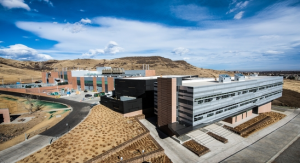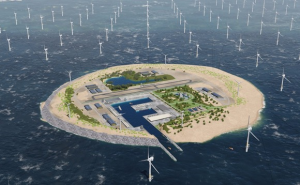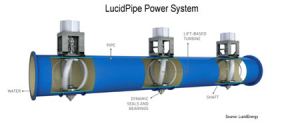Vol. 18 #3 June 21, 2016: The Splendor of the Rockies
In This Issue
Flanigan’s Eco-Logic
The Energy Tipping Point: An Editorial
Wooden High Rises
Apple Seeks to Sell Electricity
Flow Batteries Gaining Traction
So What the Heck is a “Yield Co”?
U.S. Rooftop Photovoltaic Potential
Dutch and Danish Energy Islands
In-Line Hydro Generators
Welcoming New Staff

Flanigan’s Eco-Logic: The Splendor of the Rockies
The splendor of late spring in the Colorado Rockies! What an exhilarating time of year to be visiting the snow-capped mountains, touching base with many family and friends in the Roaring Fork Valley! Brother Russell and I have travelled from Vermont and California to Carbondale for brother Bill’s birthday tribute. What a trip. Thanks to Kathy, Bill, Russell, Michael, Chris, Susan, Stuart, Nic, and George. A full and fulfilling time of catching up, celebration, good cheer, mountains, trees, rushing water, and clean air.
Crossing the sky bridge at DIA I got my good glimpse of the mountains, still laden with snow. After tacos and catching up with Michael in Denver, and climbing into the mountains, through the Eisenhower Tunnel… and ultimately the Glenwood Canyon, where we turn south on Highway 82 to Aspen. In the moonlight we gasp at the grandeur of Mount Sopris and find the birthday boy for a late-night, surprise rendezvous.
Waking up, getting out side, breathing in the day. Summer is a’coming in the mountains. It’s going to be a hot day. Streams and rivers are choked with dangerous rapids. We pass endless flows of sparkling water chugging down Capital Creek, Snowmass Creek, the Roaring Fork, Frying Pan, and Crystal rivers. The clouds are bursting with energy, the clearest of blue skies, and the greenest of greens. Trees rustling, residents bustling…
It’s hard not to be struck by the quality of life in the valley. This time of year it is nothing short of idyllic. There’s excitement in the air. We hit Café Bernard in Basalt and then Old Snowmass for a water system meeting at my home there.
Old Snowmass is the same, but my how the trees have grown. The “old” Rocky Mountain Institute headquarters where I worked, once quite barren of vegetation, is now fully settled in. My Shore House, and named after its active-solar designer, builder, and owner Ron Shore, is in great shape, now home to Nic, Mary, baby Emma, and Piper the lab. The new water storage system has changed our water equation; I have six-week storage on site. It’s a great neighborhood.
We head to Redstone to check in on brother Bill who is doing sound for a concert put on by five fathers, Catholic priests. It’s a gorgeous setting along the river, a barbeque, good vibes all around. I put my bare feet in the frigid Crystal River. Then back to Carbondale to help prepare for the birthday gathering of Bill’s friends, the local brethren.
Carbondale is located 170 miles west of Denver, 12 miles from Glenwood Springs, and 30 miles from Aspen. It’s at an altitude of 6,181 feet. A couple of miles off the main drag, the town has a rural, small-town feel, clearly infused with progressive values. People bike and walk about; solar is everywhere. We see the new high school array, and stay cool under a shade structure adorned with panels. People here love their community. Despite recent growth, and transition from farm community to a town with fancy restaurants and now a chic vodka distillery, it’s an unparalleled home base.
Brothers I have, and brothers I love. We’ve been tight for all our years. My older brother is smart, analytical, and hugely kind. He’s a concert soundman and computer programmer. He is hard-wired to take care of people. For us, Bill’s a rock-solid friend for life and that’s not changing. We three have a bond that’s powerful and meaningful… reinforced once again by reunion in the mountains and where Bill calls home.
There’s a profound sense of fulfillment of seeing one’s family member truly loved and admired. We celebrate in a circular reception line involving us all, a deliberate means to meet everyone. Bill is our bond. It’s most apparent that these friends are solid supporters, and they tell us stories of how he has supported them. It’s great to witness and to feel. There are toasts, lasagnas, a smorgasbord of salads, and we sing and eat an oversized carrot cake.
Russell and I relish in knowing that our brother Bill is well and greatly respected. He and Kathy have formed a community, a tight resilient community of locals bonded by their village. And in the splendor of spring in the Rockies, this form of wealth is true and truly wonderful to see.

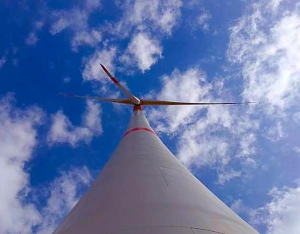 The energy tipping point… it’s in our face. All we hear about is more and more solar, and less coal. More renewables and less fossils. It’s also about new market entrants of note: Apple sells Macbooks, Iphones, and soon electricity? That’s renewable only to be clear. Google is also in the power business. Amazon just cleared a regulatory hurdle to be build an offshore wind farm in North Carolina. There’s even a solar plane – an aerial microgrids of sorts – that just flew across the country: the Solar Impulse.
The energy tipping point… it’s in our face. All we hear about is more and more solar, and less coal. More renewables and less fossils. It’s also about new market entrants of note: Apple sells Macbooks, Iphones, and soon electricity? That’s renewable only to be clear. Google is also in the power business. Amazon just cleared a regulatory hurdle to be build an offshore wind farm in North Carolina. There’s even a solar plane – an aerial microgrids of sorts – that just flew across the country: the Solar Impulse.

 Worldwide, Apple gets 93% of the electrical energy it needs from solar and other renewable sources. In some states it over-generates. Apple has hundreds of megawatts of solar projects, the power from which runs its stores, offices, and datacenters worldwide. Recently, Apple created a subsidiary – Apple Energy LLC — to sell excess electricity generated by its solar projects. The Cupertino, California-based company has filed a request with the FERC to sell electricity on the wholesale market.
Worldwide, Apple gets 93% of the electrical energy it needs from solar and other renewable sources. In some states it over-generates. Apple has hundreds of megawatts of solar projects, the power from which runs its stores, offices, and datacenters worldwide. Recently, Apple created a subsidiary – Apple Energy LLC — to sell excess electricity generated by its solar projects. The Cupertino, California-based company has filed a request with the FERC to sell electricity on the wholesale market.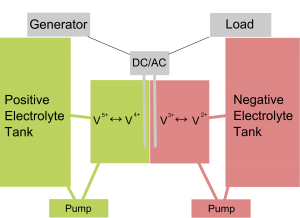
 The renewable energy industry is evolving. Renewable project developers have been at work for some years building wind farms and solar arrays. Now a new business model comes into play related to “old” systems. Welcome to the world of “Yield Cos” These are companies that buy wind and solar systems, and operate them given consistent yields – with almost no risk – for years. They are steady investments, non-volatile, and devoid of the risk and returns of project development.
The renewable energy industry is evolving. Renewable project developers have been at work for some years building wind farms and solar arrays. Now a new business model comes into play related to “old” systems. Welcome to the world of “Yield Cos” These are companies that buy wind and solar systems, and operate them given consistent yields – with almost no risk – for years. They are steady investments, non-volatile, and devoid of the risk and returns of project development.